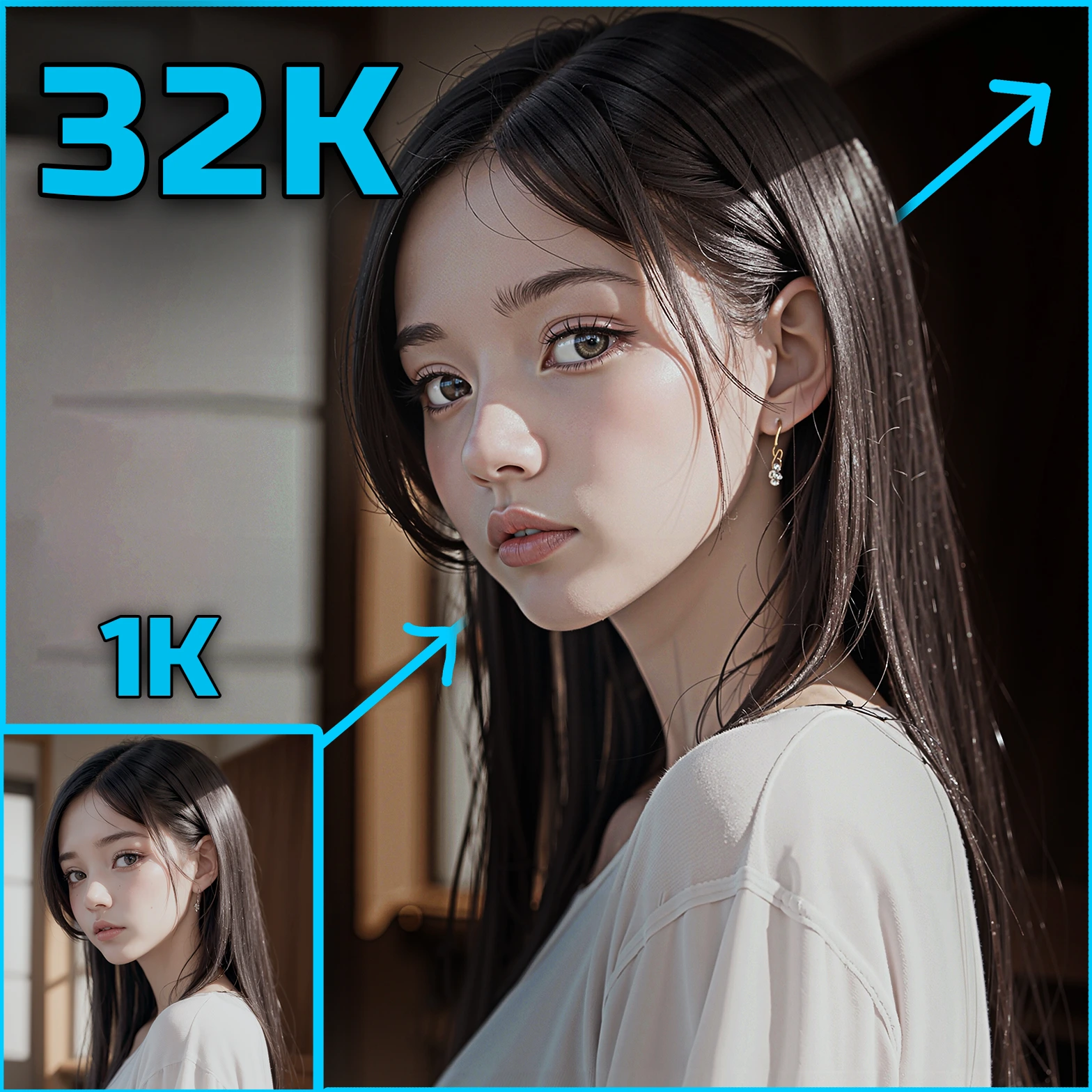ComfyUI Node: 🤗 Diffusers Prepare Latents
DiffusersPrepareLatents
CategoryJannchie
How to Install ComfyUI-J
Install this extension via the ComfyUI Manager by searching for ComfyUI-J- 1. Click the Manager button in the main menu
- 2. Select Custom Nodes Manager button
- 3. Enter ComfyUI-J in the search bar
Visit ComfyUI Online for ready-to-use ComfyUI environment
- Free trial available
- 16GB VRAM to 80GB VRAM GPU machines
- 400+ preloaded models/nodes
- Freedom to upload custom models/nodes
- 200+ ready-to-run workflows
- 100% private workspace with up to 200GB storage
- Dedicated Support
🤗 Diffusers Prepare Latents Description
Prepare latent variables for diffusion models from Hugging Face Diffusers library, streamlining initialization for consistent results in image generation.
🤗 Diffusers Prepare Latents:
The DiffusersPrepareLatents node is designed to prepare latent variables for use in diffusion models, specifically those from the Hugging Face Diffusers library. This node is essential for setting up the initial latent space that the diffusion process will operate on, ensuring that the generated images or other outputs are based on a well-defined starting point. By leveraging this node, you can streamline the process of initializing latents, making it easier to integrate with various diffusion pipelines and achieve consistent results. This node is particularly useful for AI artists who want to generate high-quality images by providing a robust and reliable method for latent preparation.
🤗 Diffusers Prepare Latents Input Parameters:
pipeline
This parameter expects a diffusion pipeline object, typically from the Hugging Face Diffusers library. The pipeline is the core component that defines the model architecture and the diffusion process. By providing a well-configured pipeline, you ensure that the latents are prepared in a manner that is compatible with the specific diffusion model you are using. This parameter is crucial as it directly influences the quality and characteristics of the generated latents.
batch_size
The batch size determines the number of latent samples to generate in one go. A larger batch size can speed up the generation process by utilizing parallel computation, but it also requires more memory. The default value is typically set to 1, but you can adjust it based on your hardware capabilities and the requirements of your project.
height
This parameter specifies the height of the latent space in pixels. It directly impacts the resolution of the generated images. Higher values result in higher resolution images but also increase computational load. The default value is usually set to match the model's expected input size.
width
Similar to the height parameter, this specifies the width of the latent space in pixels. It affects the resolution and aspect ratio of the generated images. Adjusting this parameter allows you to control the output dimensions to fit your specific needs.
dtype
The data type for the latents, typically set to match the model's requirements. Common options include float32 or float16, with the latter being more memory efficient but potentially less precise. This parameter ensures that the latents are compatible with the model's expected input format.
device
This parameter specifies the computational device to use, such as cpu or cuda for GPU acceleration. Using a GPU can significantly speed up the latent preparation process, especially for large models and high-resolution outputs.
generator
A random number generator used for sampling the latents. This parameter allows for reproducibility by setting a specific seed, ensuring that the same latents can be generated across different runs if needed.
latents
Optional pre-existing latents that can be provided to initialize the process. If not provided, new latents will be generated from scratch. This parameter is useful for fine-tuning or continuing previous work.
🤗 Diffusers Prepare Latents Output Parameters:
latents
The output of this node is a tensor of latents, which serves as the starting point for the diffusion process. These latents are crucial for generating the final output, whether it be images or other forms of media. The quality and characteristics of these latents directly influence the final results, making this output a key component in the diffusion pipeline.
🤗 Diffusers Prepare Latents Usage Tips:
- Ensure that your pipeline is correctly configured and compatible with the latents you intend to generate.
- Adjust the batch size according to your hardware capabilities to optimize performance.
- Use a GPU (
cudadevice) for faster latent preparation, especially for high-resolution outputs. - Set a specific seed in the generator for reproducible results, which is useful for iterative experimentation.
🤗 Diffusers Prepare Latents Common Errors and Solutions:
AttributeError: Could not access latents of provided encoder_output
- Explanation: This error occurs when the provided encoder output does not contain the expected latent distribution or latents.
- Solution: Ensure that the encoder output is correctly generated and contains the necessary latent information. Verify the compatibility of the encoder with the diffusion pipeline.
ValueError: Mismatched dimensions for height and width
- Explanation: This error arises when the specified height and width do not match the expected dimensions for the model.
- Solution: Check the model's documentation for the required input dimensions and adjust the height and width parameters accordingly.
RuntimeError: CUDA out of memory
- Explanation: This error occurs when the GPU does not have enough memory to handle the specified batch size or resolution.
- Solution: Reduce the batch size or resolution, or switch to a device with more memory. Alternatively, consider using mixed precision (float16) to save memory.
🤗 Diffusers Prepare Latents Related Nodes
RunComfy is the premier ComfyUI platform, offering ComfyUI online environment and services, along with ComfyUI workflows featuring stunning visuals. RunComfy also provides AI Playground, enabling artists to harness the latest AI tools to create incredible art.



